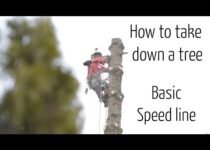How to Properly Perform Tree Removal
Trees are an integral part of a landscape, providing beauty and habitat for wildlife. Unfortunately, sometimes a tree needs to be removed for a variety of reasons. It may be dead, dying, in the way of a construction project or for other reasons.
Removing a tree requires the use of an experienced professional or crew to ensure that it is properly taken down. It is also important to understand the regulations that are in place regarding the removal of trees, so it’s a good idea to consult with your local planning department to find out what laws apply to you and to make sure that you can obtain the necessary permit for the job.
Doing it yourself can be a great option when you need to do a job quickly, but it’s important to be prepared. You’ll need a lot of equipment, including the tools needed for the cutting and stump removal process as well as the safety gear to wear while on the job.
The first step in removing a tree is to remove the main branches. This can be done with a chainsaw and is best done in stages, so that the chainsaw doesn’t get tired or overheated.
Once the primary branches are removed, cut off any lower branches that are too close to the ground. These are more likely to break and splinter and can be dangerous when falling. The best way to do this is to make an ‘undercut’ by sawing upwards from the branch’s underside then sawing downwards about 1/4th of the way down. Repeat the process until all of the branches are off the tree.
Next, chop the tree so it will fall in a direction that is more natural for the tree and one that won’t damage property or interfere with nearby structures. It is also a good idea to leave a small hinge behind the tree to help control the way it falls.
When the tree is down, it will be easier to dispose of it and make space for new plants. You can compost the wood and roots, or use it for firewood or lumber.
Depending on the size of the tree, you will need to sever it from its root ball and haul away its debris. This can be a messy and time-consuming process, so you’ll want to be careful and prepare ahead of time.
If the tree has roots that extend into a utility line or other structure, you’ll need to carefully wiggle them out with a rake and shovel. This can be a tedious and dangerous task, so you’ll want to have a friend or hired professional help you.
Once you have the tree down, it’s a good idea to remove the tree stump as well. This can be a time-consuming process, but it is an essential part of the removal process and will allow the stump to decompose and break down much more quickly than if it was left to decay in the ground.


